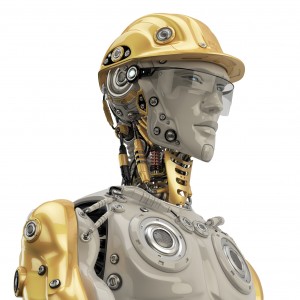Innovation In Our Refrigerator

How can I innovate here?
When we think of innovation, we often think of bright young people working in creatively organized offices while pushing the envelope and thinking outside the box. It’s fun, exciting, challenging, and maybe even a little bit sexy. It’s the kind of job we all want.
But what about the rest of the world?
Much of the innovation that I have observed takes place in rather mundane places and involves rather ordinary business or social processes. It’s the act of taking some thing (or some process), observing how it’s used, and designing a better way to do it. If we think about innovation only as the process of creating something entirely new, we’ll miss many, many opportunities to change the world for the better.
Take our refrigerator, for instance.
Suellen and I were recently on vacation and asked a very responsible young woman named Alyssa to house sit for us. As soon as we left, our refrigerator stopped working. Alyssa organized a service call, coordinated with the repairman, and had the refrigerator repaired in a jiffy. From our perspective, it was virtually painless (except for the bill, of course).
When we arrived back home, we also got a pleasant surprise. Alyssa had completely reorganized the interior space of the refrigerator. She had examined the food items we keep and adjusted shelves and drawers to fit our lifestyle. She used the space much more efficiently and made frequently used items more readily available. It’s now simpler and easier to store and retrieve our food.
Why hadn’t we organized our fridge more effectively? We never thought about it. It’s one of those ordinary, mundane appliances that doesn’t attract our attention. It’s not leading edge, or state of the art, or sexy. Though we use it every day, we never considered how we might improve it. When the refrigerator arrived in our house, we simply put our food in it. We didn’t think about rearranging shelves or drawers to improve utility and efficiency. It took Alyssa to apply design thinking to an ordinary, everyday item.
We describe some things as “wallpaper” because they recede into the background. We don’t need to pay much attention to them. We don’t consider them as opportunities to create and innovate. But we interact with our wallpaper everyday. That makes even small innovations meaningful and impactful. If you want to be an innovator, spend more time on wallpaper and less time thinking outside the box.
Questions, Proxies, and Health
When faced with a difficult question, we often substitute a simpler question and answer that instead. Here are three examples:
- What’s the crime rate in your neighborhood? – We probably don’t keep close tabs on the crime rate. We’re not naturally good at statistics either so it’s difficult to develop a reasonable estimate. So we substitute a different question: How easy is it for me to remember a crime committed in my neighborhood? If it’s easy to remember, we guess that the neighborhood has a high crime rate. If it’s hard to remember, we guess a lower rate. (I’ve adapted this example from Daniel Kahneman’s book, Thinking Fast and Slow).
- How’s your car running? – It’s hard to know how well a car is running in this age of sophisticated electronics. So we answer a different question: How does the car sound? If it’s not making strange noises – knocks and pings – it must be running well and performing optimally.
- How effective is your shampoo? – I suppose we could study our hair’s health every day but most of us don’t. So we answer a simpler question: How much lather does your shampoo produce? If we get a lot of lather, the shampoo must be effective.

How many do I need to get 10 calories of energy?
In each case, we substitute a proxy for the original question. We assume that the proxy measures the same thing that the original question aimed to measure. Sometimes we’re right; sometimes we’re wrong. Most often, we don’t think about the fact that we’re using a proxy. System 1 does the thinking for us. But we can, in fact, bring the proxy to System 2 and evaluate whether it’s effective or not. If we think about it, we can use System 2 to spot errors in System 1. But we have to think about it.
As it happens, System 1 uses proxies in some situations that we might never think about. Here’s an example: How much food should you eat?
(The following is based on a study from the University of Sydney. The research article is here. Less technical summaries are here and here).
We tend to think of food in terms of quantity. System 1 also considers food as a source of energy. System 1 is trying to answer two questions: 1) How much energy does my body need? 2) How much food does that translate to?
Our bodies have learned that sweet food delivers more energy than non-sweet food and can use this to translate from energy needs to food requirements. Let’s say that the equation looks something like this:
1 calorie* of energy is generated by 10 grams of sweet food
Let’s also assume that our body has determined that we need 10 calories of energy. A simple calculation indicates that we need to eat 100 grams of sweet food. Once we’ve eaten 100 grams, System 1 can issue a directive to stop eating.
Now let’s change the scenario by introducing artificial sweeteners that add sweetness without adding many calories. The new translation table might look like this:
1 calorie of energy is generated by 30 grams of artificially sweetened food
If we still need 10 calories of energy, we will need to eat 300 grams of artificially sweetened food. System 1 issues a directive to stop only after we’ve eaten the requisite amount.
System 1 can’t tell the difference between artificially and naturally sweetened foods. It has only one translation table. If we eat a lot of artificially sweetened food, System 1 will learn the new translation table. If we then switch back to naturally sweetened foods, System 1 will still use the new translation table. It will still tell us to eat 300 grams of food to get 10 calories of energy.
We would never know that our brain makes energy/quantity assumptions if not for studies like this one. It’s not intuitively obvious that we need to invoke System 2 to examine the relationship between artificial sweeteners and food intake. But like crime rates or cars or shampoos, we often answer different questions than we think we’re answering. To think more clearly, we need to examine our proxies more carefully.
*It’s actually a kilocalorie of energy but we Americans refer to it as a calorie.
Male Chauvinist Machines

Yanks win last night?
Do men and women think differently? If they do, who should develop artificial intelligence? As we develop AI, should we target “feminine” intelligence or “masculine” intelligence? Do we have enough imagination to create a non-gendered intelligence? What would that look like?
First of all, do the genders think differently? According to Scientific American, our brains are wired differently. As you know, our brains have two hemispheres. Male brains have more connections within each hemisphere as compared to female brains. By contrast, female brains have more connections between hemispheres.
Men, on average, are better at connecting the front of the brain with the back of the brain while women are better at connecting left and right hemispheres. How do these differences influence our behavior? According to the article, “…male brains may be optimized for motor skills, and female brains may be optimized for combining analytical and intuitive thinking.”
Women and men also have different proportions of white and gray matter in their brains. (Click here). Gray matter is “…primarily associated with processing and cognition…” while white matter handles connectivity. The two genders are the same (on average) in general intelligence, so the differences in the gray/white mix suggest that there are two different ways to get to the same result. (Click here). Women seem to do better at integrating information and with language skills in general. Men seem to do better with “local processing” tasks like mathematics.
Do differences in function drive the difference in structure or vice-versa? Hard to tell. Men have a higher percentage of white matter and also have somewhat larger brains compared to women. Perhaps men need more white matter to make connections over longer distances in their larger brains. Women have smaller heads and may need less white matter to make the necessary connections — just like a smaller house would need less electrical wire to connect everything. Thus, a larger proportion of the female brain can be given over to gray matter.
So men and women think differently. That’s not such a surprise. As we look ahead to artificial intelligence, which model should we choose? Should we emphasize language skills, similar to the female brain? Or local processing skills, similar to the male brain? Should we emphasize processing power or information integration?
Perhaps we could do both, but I wonder how realistic that is. I try to imagine what it would be like to think as a woman but I find it difficult to wrap my head around the concept. As a feminist might say, I just don’t get it. I have to imagine that a woman trying to think like a man would encounter similar difficulties.
Perhaps the best way to develop AI would involve mixed teams of men and women. Each gender could contribute what it does best. But that’s not what’s happening today. As Jack Clark points out, “Artificial Intelligence Has A “Sea of Dudes’ Problem”. Clark is mainly writing about data sets, which developers use to teach machines about the world. If men choose all the data sets, the resulting artificial intelligence will be biased in the same ways that men are. Yet male developers of AI outnumber females by a margin of about eight-to-one. Without more women, we run the risk of creating male chauvinist machines. I can just hear my women friends saying, “Oh my God, no!”
The Porcelain Elephant In The Room

We need to talk.
I subscribe to Harvard Business Review’s (HBR) Management Tip of the Day and, every business day, I get a one-paragraph idea for improving my communication and management skills. It’s an intriguing way to get exposed to a wide-range of ideas in short period of time. (Click here to subscribe).
A recent tip summarized how to “Avoid Fighting With Your Spouse When You Get Home From Work.” The article notes “It’s unrealistic and unhelpful for couples to expect that they’ll automatically be in sync when they arrive home; different needs, different recovery times, and different experiences…make it more likely that you’ll be out of sync.”
It’s a good point and it reminds me of a story from a young colleague of mine named Molly. Molly and her husband have been married for just a few years and they both work outside the home. They’re settling in to their careers and their jobs are demanding. They noticed that, when they arrive home, their emotional states are often “out of sync.”
Sometimes Molly would arrive home after a tough day and notice something askew in the house. She might stew on it a bit and, when her husband arrived home, she would “pounce” on him. Sometimes, it’s the other way round – husband arrives home first, stews on something, and pounces on an unsuspecting Molly when she arrives. I suspect that all married couples have had similar experiences.
What makes Molly and her husband different is that they realized that neither one of them was at fault. It wasn’t his or her fault. Rather, it was a question of timing and the degree to which they were in or out of sync emotionally.
So they decided to … buy a porcelain elephant. They also agreed to a timing-and-discussion protocol. The porcelain elephant normally sits on a bookshelf. However, if either Molly or her husband is stewing about something, he or she moves the elephant to a coffee table in the living room. It’s a quiet signal that “We need to talk.”
Let’s replay the same scenario. Molly arrives home in a bad mood, notices something askew in the house, stews about it, and … moves the elephant to the coffee table. Her husband arrives home and notices the elephant. He can immediately ask her what’s wrong or – if he’s really not in the right mood – he can ignore it for up to 12 hours. They’ve agreed that, when the elephant comes out, they’ll have a meaningful conversation to resolve the issue, but not necessarily upon walking in the door.
I think it’s a genius move and a very mature strategy for a young couple. It ensures that the conversation happens while leaving some flexibility for both parties to get in sync emotionally. As the HBR article notes, don’t have the conversation “…right when you get home. Set aside some time to talk when you’re both feeling more relaxed.” Molly and her husband have figured out exactly how to do that.
The Art Of Transformation
 What’s the difference between an art and a craft?
What’s the difference between an art and a craft?
A traditional definition focuses on differences in expectations and outcomes. With a craft, we know precisely what the outcome will be, even before we start. We have a set of instructions and, if followed faithfully, the outcome is guaranteed.
By contrast, an artist doesn’t know what the outcome will be. Creating an artwork involves exploration, doubt, questioning, trial-and-error, and no small amount of anxiety. An artist explores the unknown and aims to give us new insights. A good artwork may not be beautiful in a classic sense, but it is always imaginative. A craftsman, on the other hand, creates the expected and delivers beauty and pleasure through execution more than imagination.
I thought of these distinctions the other day when I toured a major new exhibition, Women of Abstract Expressionism*, at the Denver Art Museum. The exhibition highlights a dozen leaders of the abstract expressionist movement and their work from roughly 1945 to 1960. Here’s how two of the artists describe the creative process:
- Grace Hartigan: “Eventually, the painting tells you what it wants to be.”
- Jay DeFeo: “When I start, I don’t know what’s going to happen. When you’re dancing, you don’t stop to think: now I’ll take a step … you allow it to flow.”
It occurs to me that the distinction between art and craft also applies to organizational development. Change management is a craft. Organizational transformation is an art.
We often invoke change management when we begin a concise and well-delineated project. We understand the boundaries and the players. We move through well-defined phases that we can measure objectively. We expect changes to occur between people – perhaps with new reporting structures and alignments. Change management is not easy to master but it seems to me that it is a craft. We often celebrate the end result. We can do that precisely because it is a craft – we know when the process ends.
Organizational transformation is much more like an art. When we seek to transform an organization’s culture, we have only a fuzzy idea of where we’re going. Milestones exist but they’re not well defined. Transformation requires changes within people rather than only between people. We can’t see those changes; nor can we measure them. If we try to measure the unmeasurable, we’ll go off course. Like any other art, transformation involves exploration, doubt, questioning, trial-and-error, and no small amount of anxiety. Paraphrasing Grace Hartigan, “Eventually, the organization tells you what it wants to be.” The secret to success is listening, not measuring.
I sometimes ask my artist friends how they know when a piece they’re working on is finished. None of them has very good answers. Some say they “just know”. Others say that they just get tired of it. Others say that it’s never finished. Whenever they see it again, they’re tempted to make “just a few minor changes.”
It occurs to me that I’ve never been to a party to celebrate an organizational transformation. Perhaps it’s because we just don’t know when the transformation is finished. It’s an art not a craft.
*The Women of Abstract Expressionism exhibit is both superb and unexpected. The paintings are exciting and energetic. The painters are almost anonymous. This is the first major exhibition – anywhere in the world — of the women who energized the abstract expressionist movement. That it happened in my hometown makes me more than just a little bit proud. You can see it – and should see it — until September 25th.
The painting illustrating this article is Grace Hartigan’s The King Is Dead, from 1960.